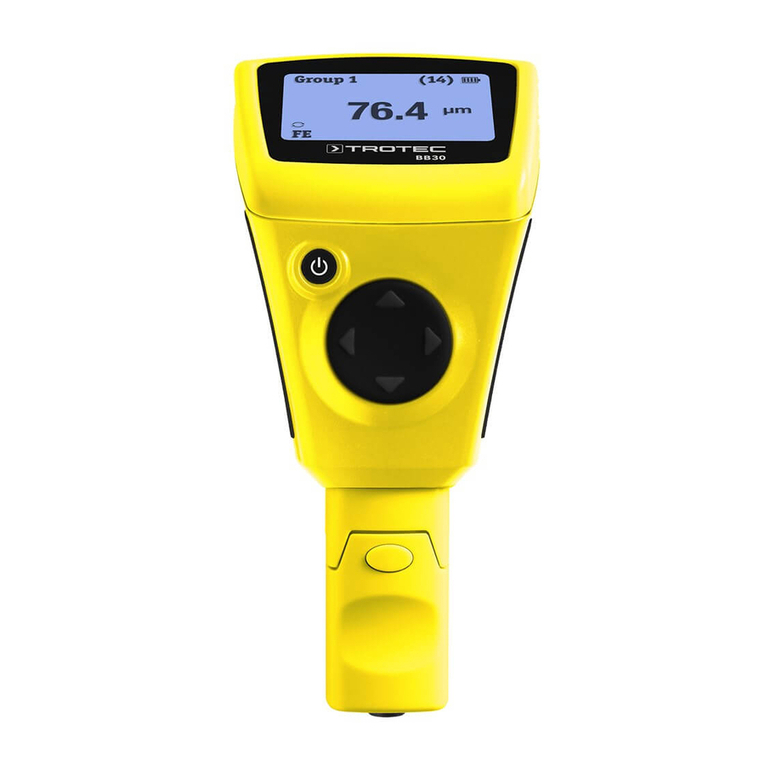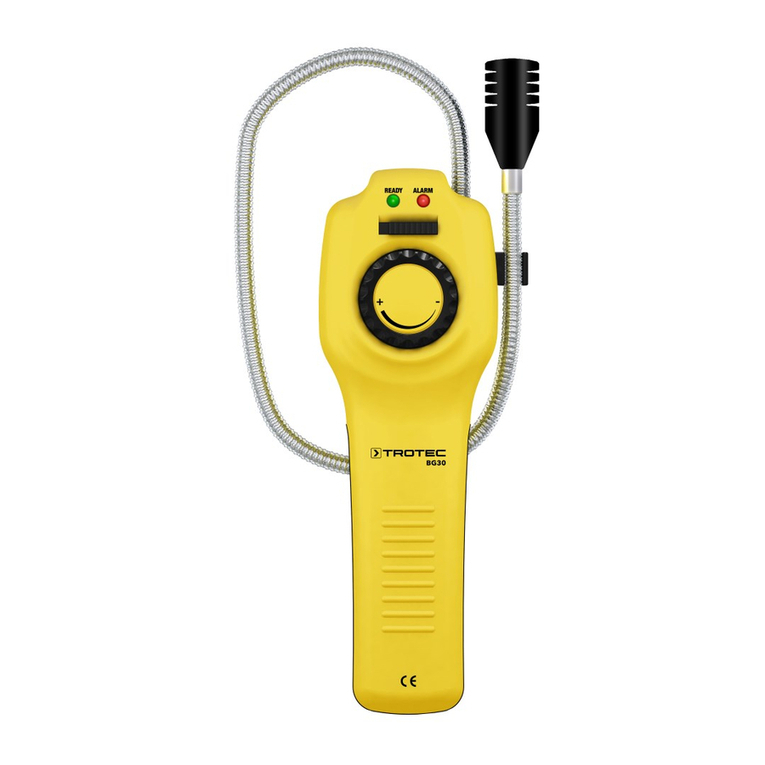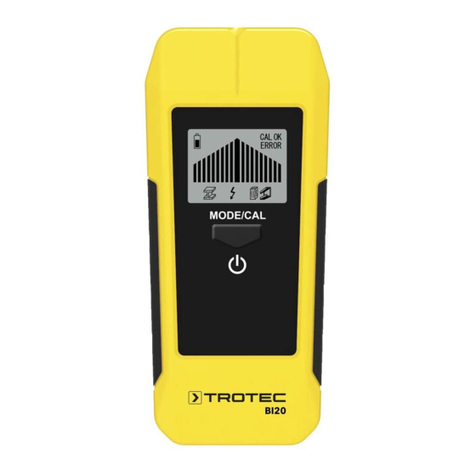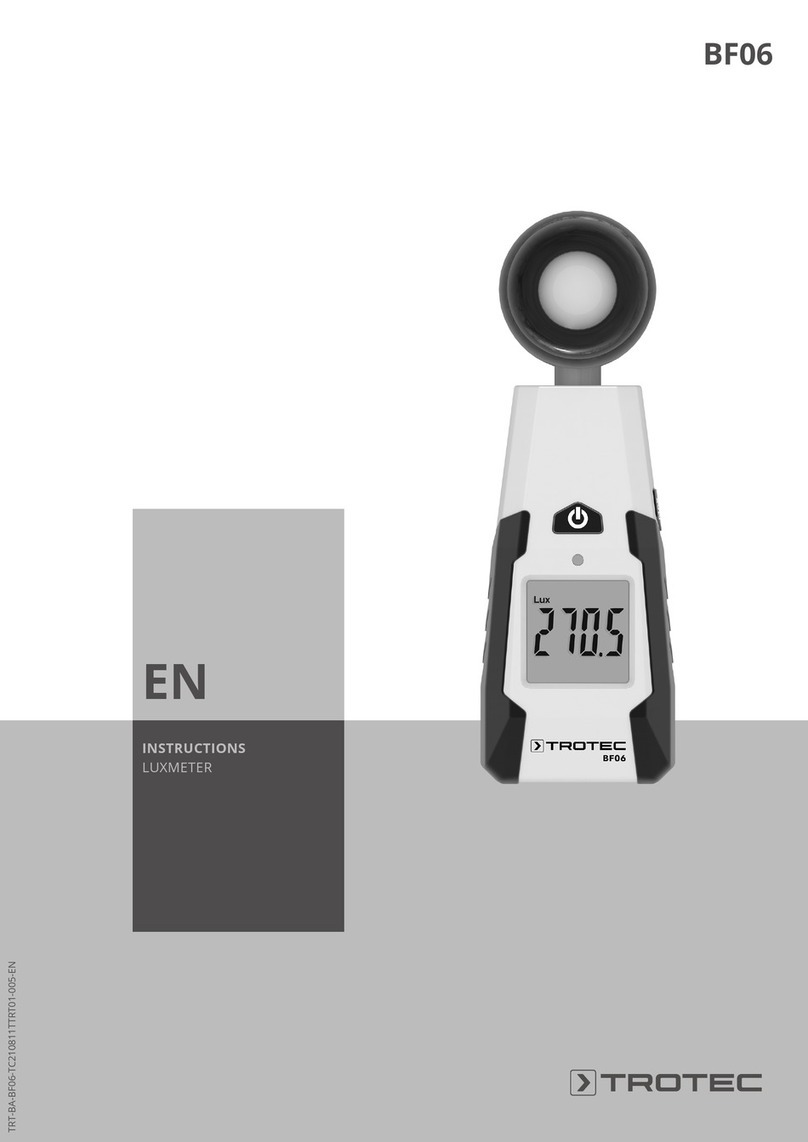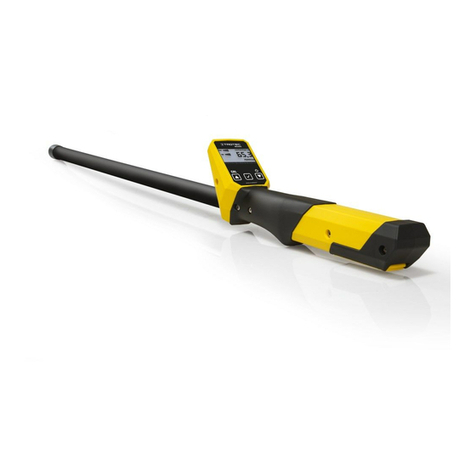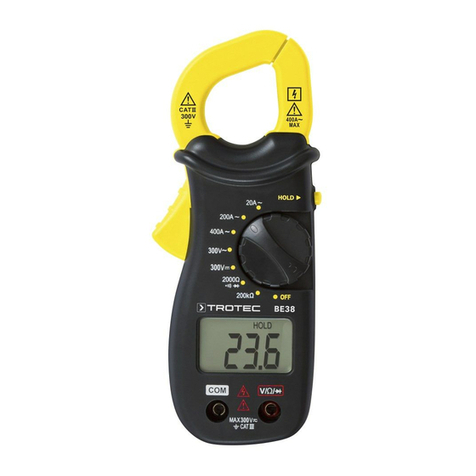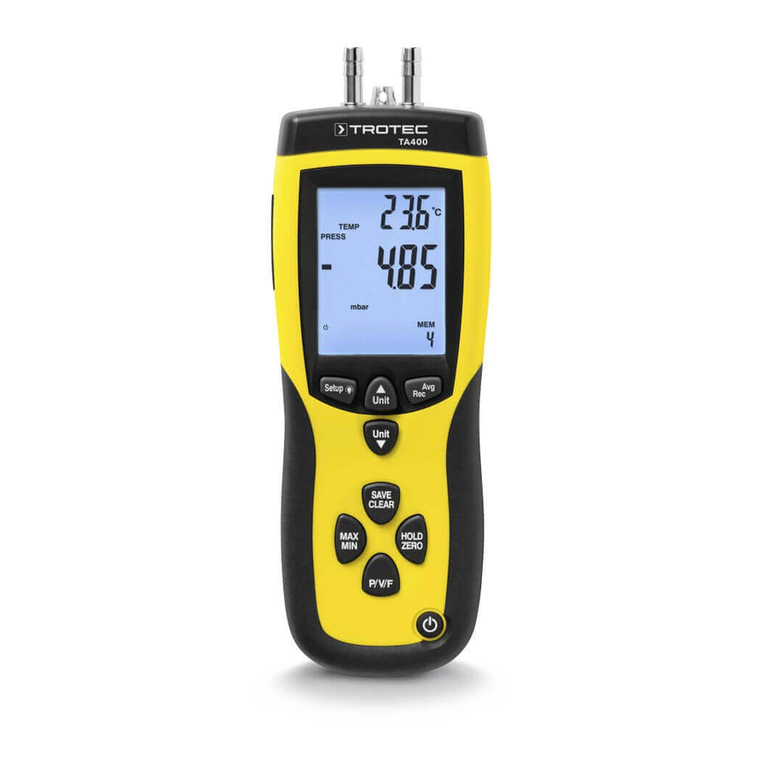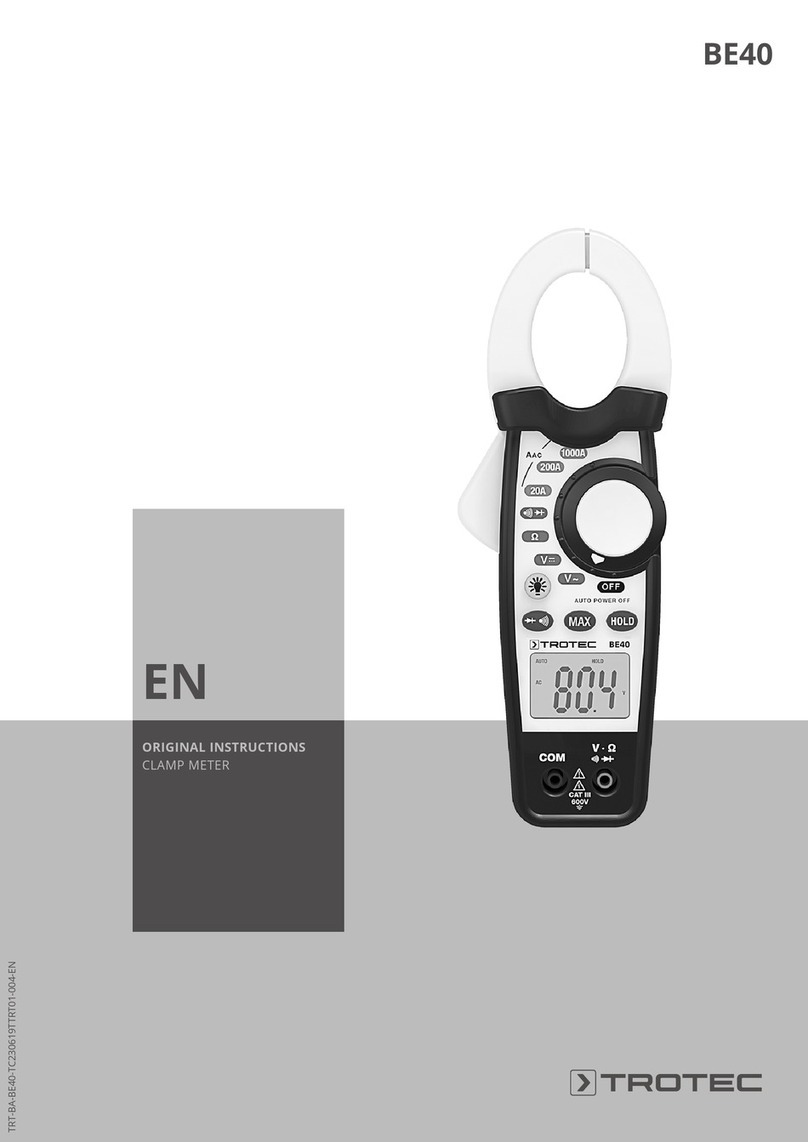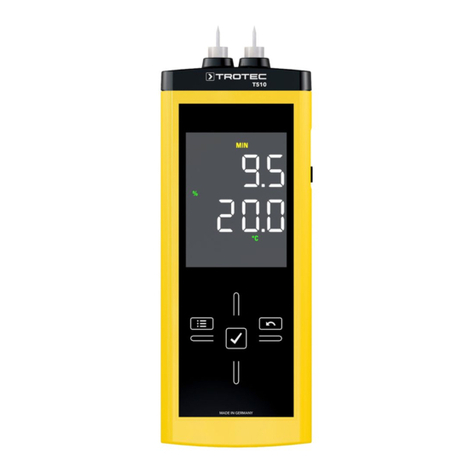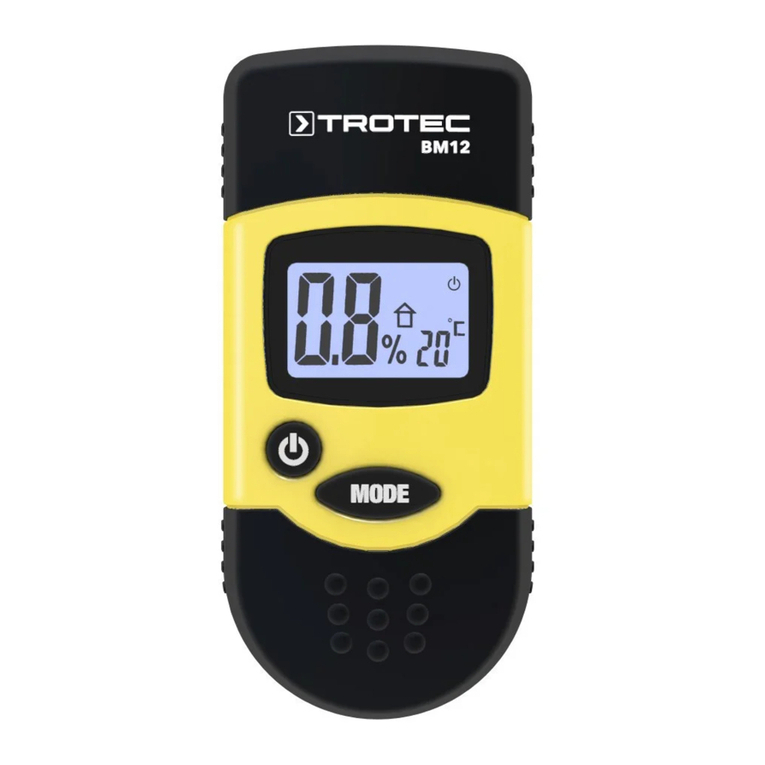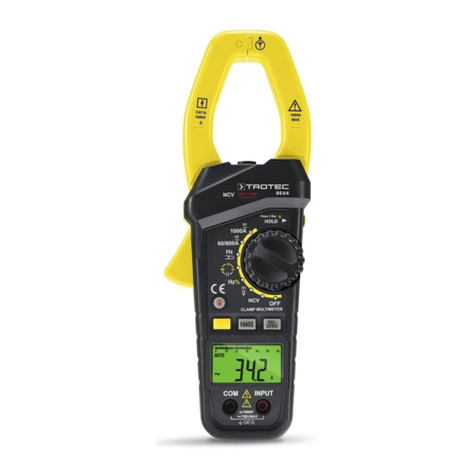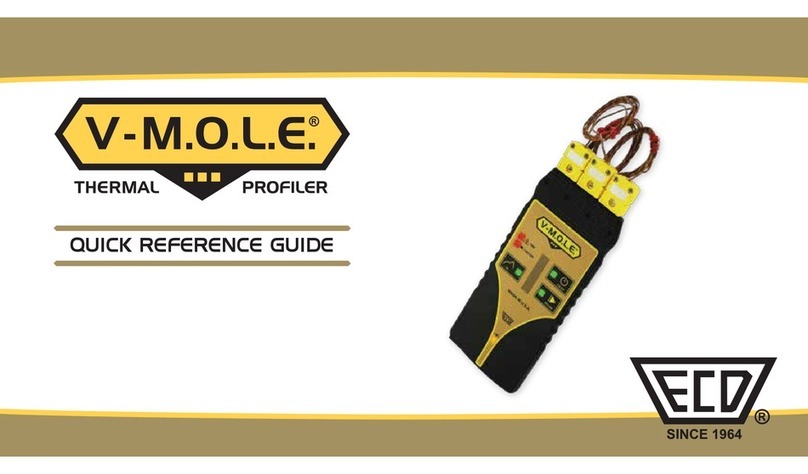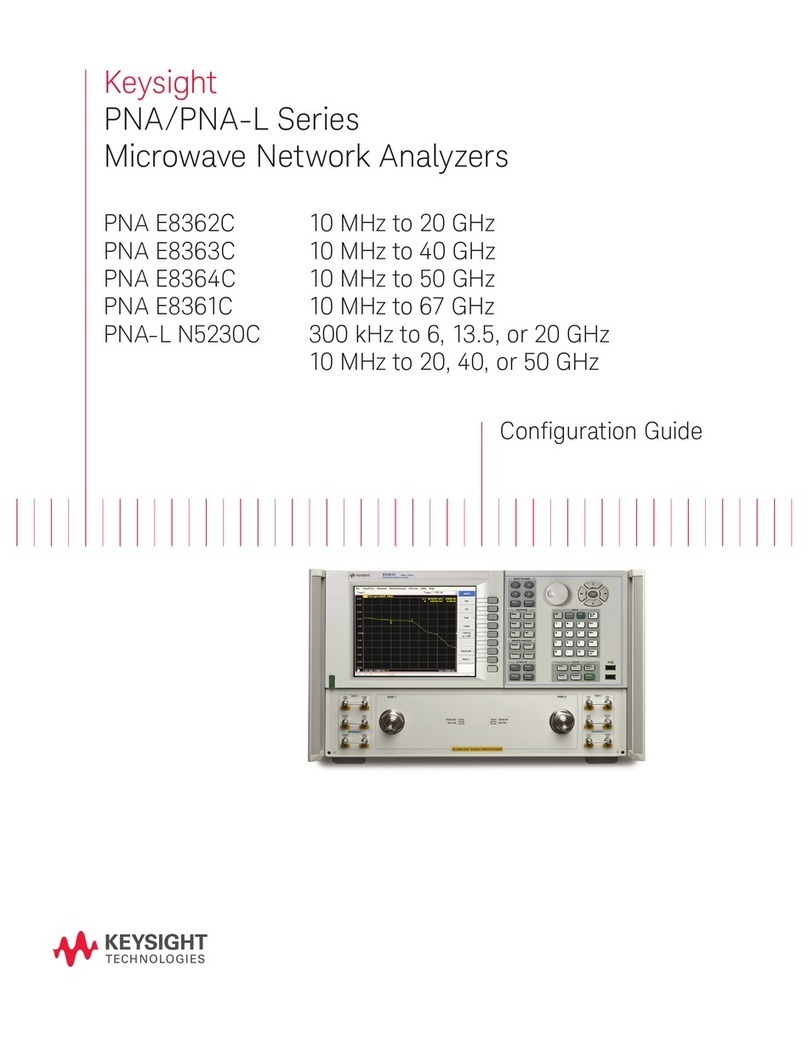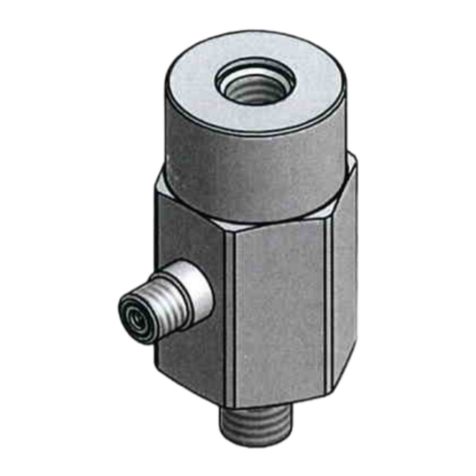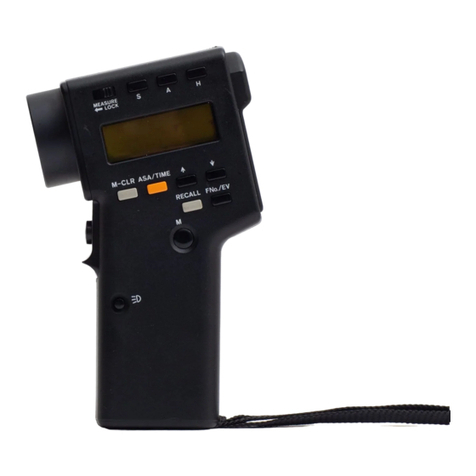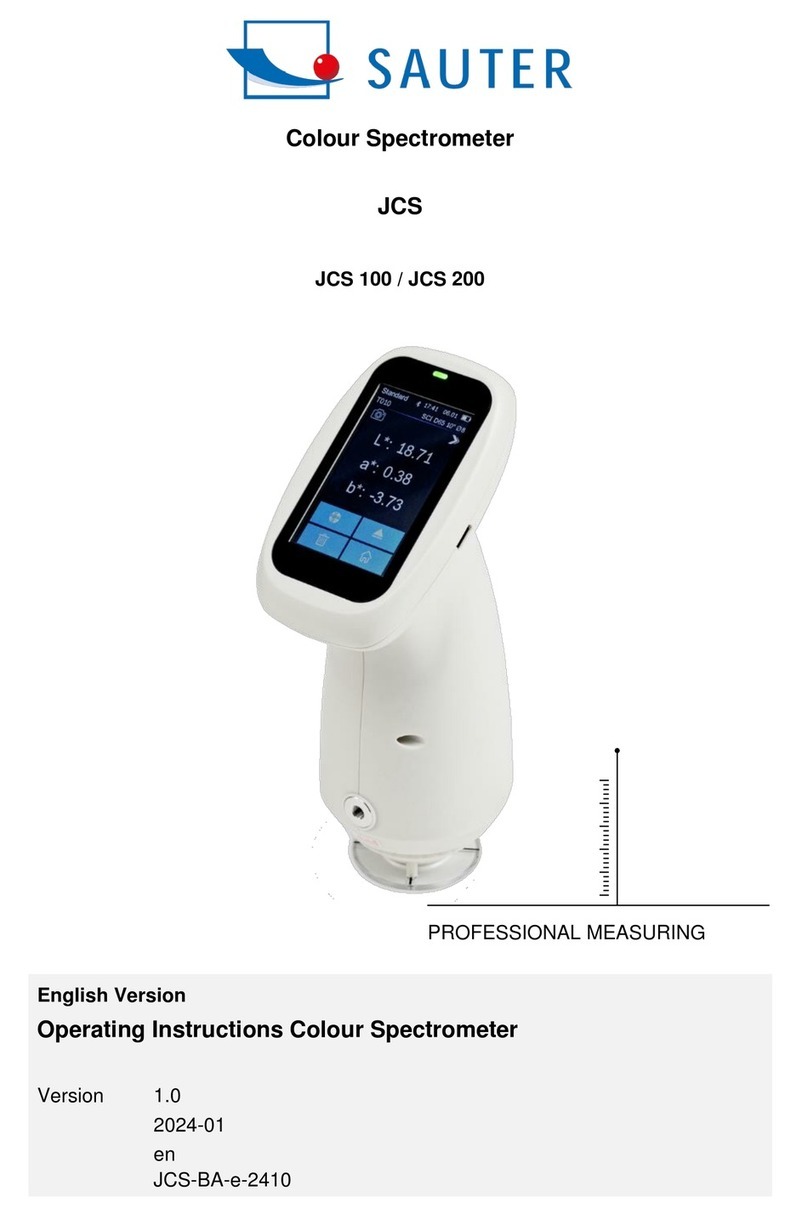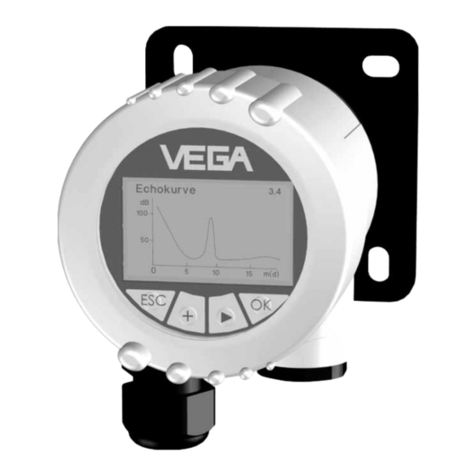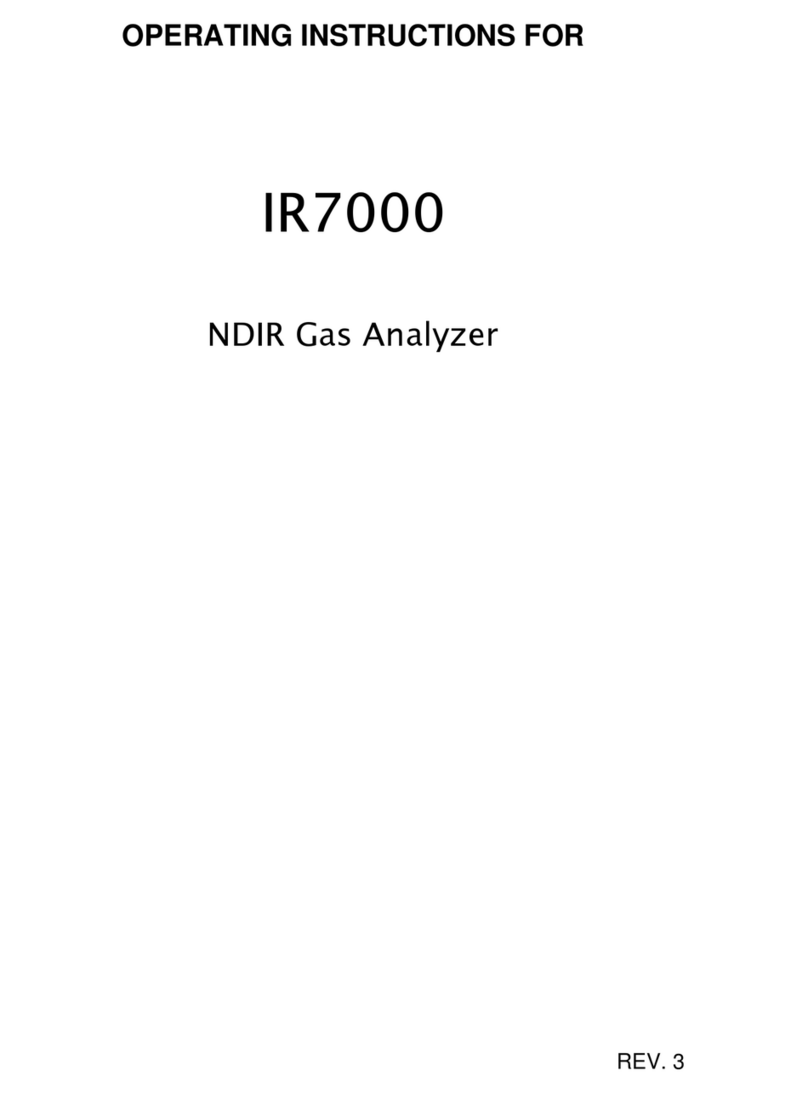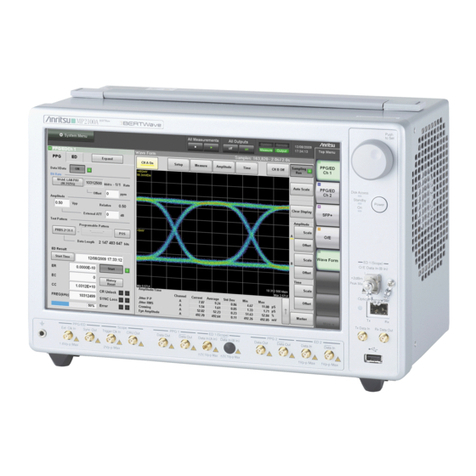Trotec BZ22M User manual

TRT-BA-BZ22M-TC2017-61-001-EN
BZ22M
EN
OPERATING MANUAL
THERMOHYGROMETER

2 EN
thermohygrometer BZ22M
Table of contents
Notes regarding the operating manual.................................2
Safety .....................................................................................2
Information about the device................................................3
Transport and storage...........................................................4
Operation ...............................................................................4
Maintenance and repair ........................................................6
Disposal .................................................................................6
Notes regarding the operating manual
Symbols
Warning
This signal word indicates a hazard with an average
risk level which, if not avoided, can result in serious
injury or death.
Caution
This signal word indicates a hazard with a low risk
level which, if not avoided, can result in minor or
moderate injury.
Note
This signal word indicates important information (e.g.
material damage), but does not indicate hazards.
Info
Information marked with this symbol helps you to carry
out your tasks quickly and safely.
Follow the manual
Information marked with this symbol indicates that the
operating manual must be observed.
You can download the current version of the operating manual
and the EU declaration of conformity via the following link:
BZ22M
https://hub.trotec.com/?id=44899
Safety
Read this manual carefully before starting or using the
device. Always store the manual in the immediate vicinity
of the device or its site of use.
Warning
Read all safety warnings and all instructions.
Failure to follow the warnings and instructions may
result in electric shock, fire and/or serious injury.
Save all warnings and instructions for future
reference.
This appliance can be used by children aged from
8years and above and persons with reduced physical,
sensory or mental capabilities or lack of experience
and knowledge if they have been given supervision or
instruction concerning use of the appliance in a safe
way and understand the hazards involved.
Children shall not play with the appliance. Cleaning and
user maintenance shall not be made by children
without supervision.
• Do not use the device in potentially explosive rooms or
areas and do not install it there.
• Do not use the device in aggressive atmosphere.
• Protect the device from permanent direct sunlight.
• Do not remove any safety signs, stickers or labels from the
device. Keep all safety signs, stickers and labels in legible
condition.
• Do not open the device.
• Observe the storage and operating conditions as given in
the Technical data chapter.
Intended use
Only use the device for indoor temperature and humidity
measurements within the measuring range specified in the
technical data. Observe and comply with the technical data.
To use the device for its intended use, only use accessories and
spare parts which have been approved by Trotec.
Foreseeable misuse
Do not use the device in potentially explosive atmospheres, for
measurements in liquids or at live parts. Trotec accepts no
liability for damages resulting from improper use. In such a
case, any warranty claims will be voided. Any unauthorised
modifications, alterations or structural changes to the device are
forbidden.
Personnel qualifications
People who use this device must:
• have read and understood the operating manual, especially
the Safety chapter.

EN 3
thermohygrometer BZ22M
Residual risks
Warning
Risk of suffocation!
Do not leave the packaging lying around. Children may
use it as a dangerous toy.
Warning
The device is not a toy and does not belong in the
hands of children.
Warning
Dangers can occur at the device when it is used by
untrained people in an unprofessional or improper way!
Observe the personnel qualifications!
Caution
Keep a sufficient distance from heat sources.
Note
To prevent damages to the device, do not expose it to
extreme temperatures, extreme humidity or moisture.
Note
Do not use abrasive cleaners or solvents to clean the
device.
Information about the device
Device description
The device BZ22M is a thermohygrometer for measuring the
relative indoor humidity level and temperature.
Additional scales allow you to read the saturation humidity and
the dew point.
Device depiction
1
2
3
4
No. Designation
1 Temperature scale
2 Saturation humidity scale
3 Dew point scale
4 Relative humidity scale

4 EN
thermohygrometer BZ22M
Technical data
Parameter Value
Model BZ22M
Relative humidity measuring
range
20 to 100%RH
Temperature measuring range -10to +40°C
Saturation humidity measuring
range
3 to50g/m³
Dew point measuring range -4to +24°C
Accuracy Humidity: ±3%RH
(20...100%), +1 scale
graduation
Temperature: ±2°C
Operating and storage
conditions
-20to +50°C at0 to
100%RH
Dimensions Ø 130mm / height 28mm
Weight 185g
Housing material Stainless steel
Transport and storage
Note
If you store or transport the device improperly, the
device may be damaged.
Note the information regarding transport and storage of
the device.
Transport
The manufacturer packed the device to the best of his abilities
to protect it against transport damage.
Storage
When the device is not being used, observe the following
storage conditions:
• Dry and protected from frost and heat
• Protected from dust and direct sunlight
• The storage temperature is the same as the range given in
the Technical data chapter.
Operation
Before positioning the device, observe the following:
• Do not expose it to direct sunlight.
• Do not position it directly above a heater.
• If possible, position it at an interior wall; avoid cooler
exterior walls.
Tips and notes on the humidity level in living spaces
General information:
Medical studies of recent years have demonstrated that an
increased indoor humidity level of well above 50 to 60% RH
promotes asthma and allergies. A low relative humidity of 30 to
40%, on the other hand, is harmless. Occasionally, the relative
humidity level in flats with a good air exchange can even drop
below 30% during harsh winters without being detrimental to
human health.
For the most part, it is the residents themselves who determine
the humidity level in their living spaces during the heating
period from October to April. A household of 3 to 4 persons
emits about ten litres of water vapour into the room air every
day, inter alia by taking showers, washing, cooking and
breathing. As modern window seals are very tight to save
energy costs and provide noise protection, this large amount of
humidity must be released to the outside by airing several times
a day.
The type of heating and ventilation determines the average
relative humidity level in a flat during the winter. Since cold air
always has a lower absolute moisture content than normal room
air, the humid air can easily be exchanged by fresh, dry air in
the winter by repeated brief and intensive airing throughout the
day. Every living space that is not equipped with a ventilation
system requires air changes several times a day, depending on
the occupancy and moisture emission.

EN 5
thermohygrometer BZ22M
A limitation of the relative humidity to prevent too high humidity
levels is only required during the heating period starting in
autumn. It is recommended to maintain a temperature of
approx. 20°C in the entire flat.
In winter:
In case of average outside temperatures below approx.+5°C,
sufficient air changes and a room temperature of approx.20°C,
a relative humidity level between 40 and 50% can easily be
obtained. If it exceeds 50%, the room should be ventilated.
During frost periods, an indoor humidity level of less than
40%RH is perfectly normal. The upper limit of 40 to 50%RH
(at approx. 20°C) needs to be observed particularly in old
buildings with little thermal insulation, as exceeding this value
for a prolonged time increases the risk of mould formation.
In autumn or spring:
At milder outside temperatures between 5 and 15°C on
average, the humidity level may reach 50 to 60%RH.
Please note:
Relatively speaking, warmer rooms are drier and colder rooms
get more humid. This is why it is recommended to maintain a
room temperature of at least 16°C.
Correct airing:
If your window panes mist up frequently or mould starts to grow
on walls, it is high time to review and, if necessary, break your
old habits. The answers to the following questions can be
useful:
• For how long should I air out?
During the winter, at temperatures below approx.+5°C, a
maximum of 5minutes should be sufficient. If the outdoor
air is warmer (5 to 15°C), about 10 to 15minutes of airing
are required.
• How should I air out?
An effective air exchange can only be obtained by leaving a
window or window door in the room wide open. It is not
necessary to create a draught. Airing a room by tilting a
window or door over an extended period of time is
generally insufficient and a waste of energy, especially
considering that the affected room will cool down much
more over time if the temperatures are low.
• What should I do if I am not at home during the day?
Airing your rooms sufficiently while you are at home will
do. Ideally, this means airing out once every morning
before you leave, once when you come home, and once
before you go to bed. It is equally important not to switch
off the heating completely during the day (16 to 18°C).
• Should I also ventilate in case of fog or rain?
This is certainly recommendable. Even very moist, cold air
always has a lower moisture content than normal indoor
air. Besides, you also need a sufficient supply of fresh air
when the weather is damp.
• What do I have to note in the summer?
Except for the basement, you can air out all rooms as
needed. There is no limitation on the hygrometer scale; the
humidity level always corresponds to the outdoor climate.
This is not harmful since the walls (except basement walls)
are usually warm enough to prevent the temperature from
falling below the dew point in normal living areas, and thus
to avoid the formation of condensation e.g. on wall
surfaces, which would promote mould growth.
• How should I air out basement rooms?
Basement rooms are at risk in the summer because during
this season the warm outdoor air contains much moisture,
which precipitates on cold surfaces.
• Can I dry laundry in the flat?
The ideal solution is a drying room that can be aired out
permanently (even in the summer or in case of frost). Apart
from that, laundry may only be dried in the flat if the room
is closed and very well heated. The room should be aired
out intensively several times during drying.
Information regarding the hygrometer
The measurement accuracy is +/-3%RH in the range from
20 to 100%RH. The hygrometer's measuring element is a
specially pre-treated synthetic fibre which, unlike real hair,
guarantees a high measurement accuracy without requiring
maintenance.
Please note that the hygrometer must not be exposed to hot
water or water vapour, otherwise the measurement accuracy
can no longer be guaranteed. If deviations occur in comparative
measurements carried out with a reference device, the
hygrometer indication can be corrected, see chapter
Maintenance and repair.

6 EN
thermohygrometer BZ22M
Reading the relative humidity, temperature, saturation
humidity and dew point
After the device has been situated in the room for some hours,
you can read the relative humidity, temperature, saturation
humidity and dew point on the dial.
1. Read the room temperature on the right side of the dial(1).
2. Read the relative humidity level on the left side of the
dial(4).
3. Read the saturation humidity on the right side of the
dial(2, inner scale). The saturation humidity value
describes the amount of water vapour the air can absorb at
a certain temperature (highest possible value of absolute
humidity). As the temperature rises, the absorption
capacity of the air increases.
4. Read the dew point value at the intersection of the two
pointers(3). The dew point describes the temperature at
which the water vapour present in the air will start to
condense.
1
2
3
4
Maintenance and repair
Adjusting the hygrometer
If the hygrometer displays a deviating humidity value e.g. during
a reference measurement, the set screw at the side of the
device can be used to adjust the indication.
In addition, the device should be moistened once a year. This is
recommended in particular after longer periods with a low
humidity level. To do so, wrap the entire device into a damp,
warm cloth for approx.30minutes. It must then display 95 to
98%. If the pointer is not within this range, the indication must
be adjusted.
Cleaning
Clean the device with a soft, damp and lint-free cloth. Make
sure that no moisture enters the housing. Do not use any
sprays, solvents, alcohol-based cleaning agents or abrasive
cleaners, but only clean water to moisten the cloth.
Repair
Do not modify the device or install any spare parts. For repairs
or device testing, contact the manufacturer.
Disposal
The device does not contain any electrical or electronic
elements. At the end of its life, please dispose of this device
according to the valid legal requirements.

Trotec GmbH
Grebbener Str. 7
D-52525 Heinsberg
+49 2452 962-400
+49 2452 962-200
www.trotec.com
Table of contents
Other Trotec Measuring Instrument manuals
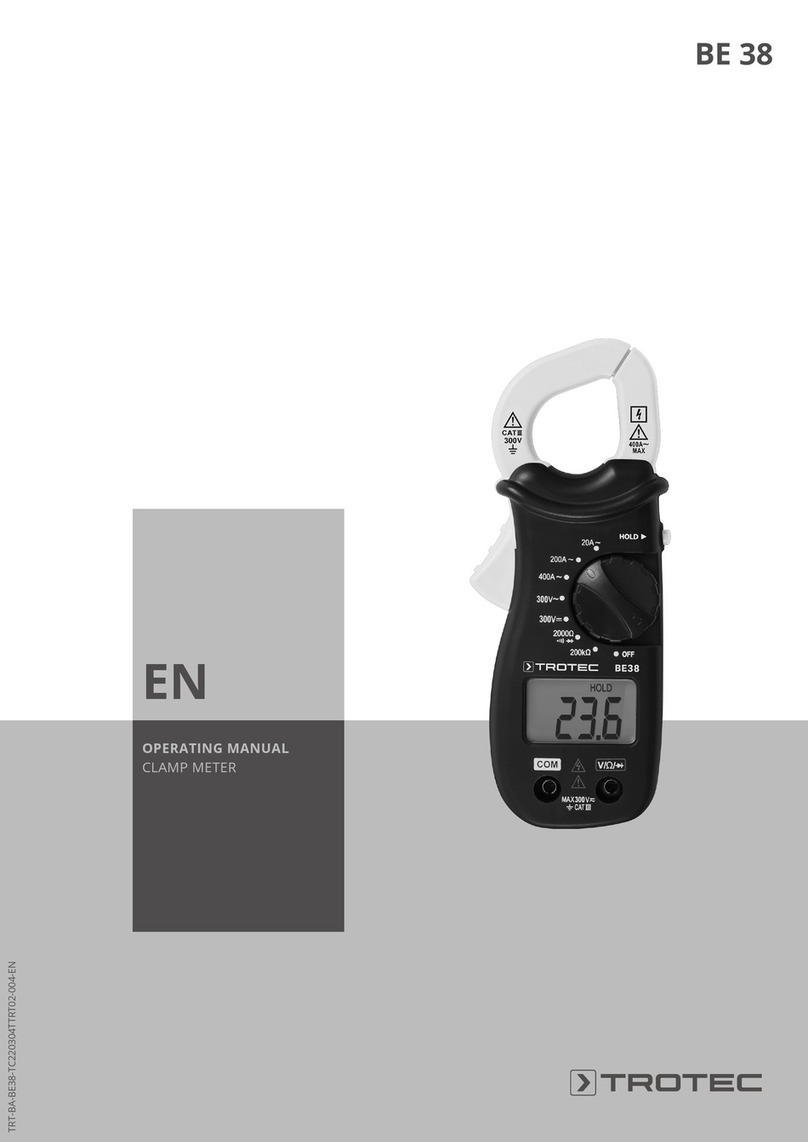
Trotec
Trotec BE 38 User manual
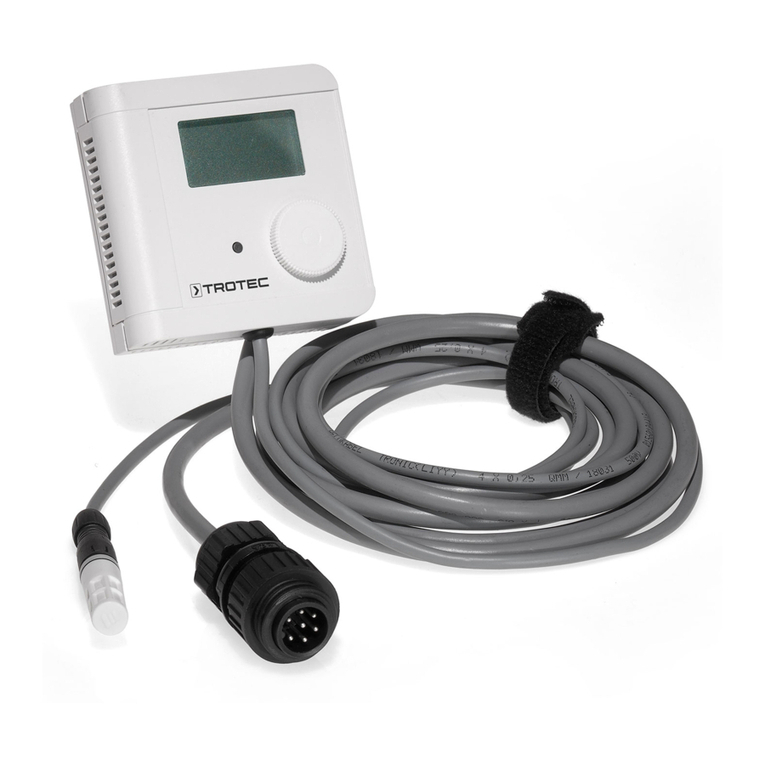
Trotec
Trotec HG 125 User manual
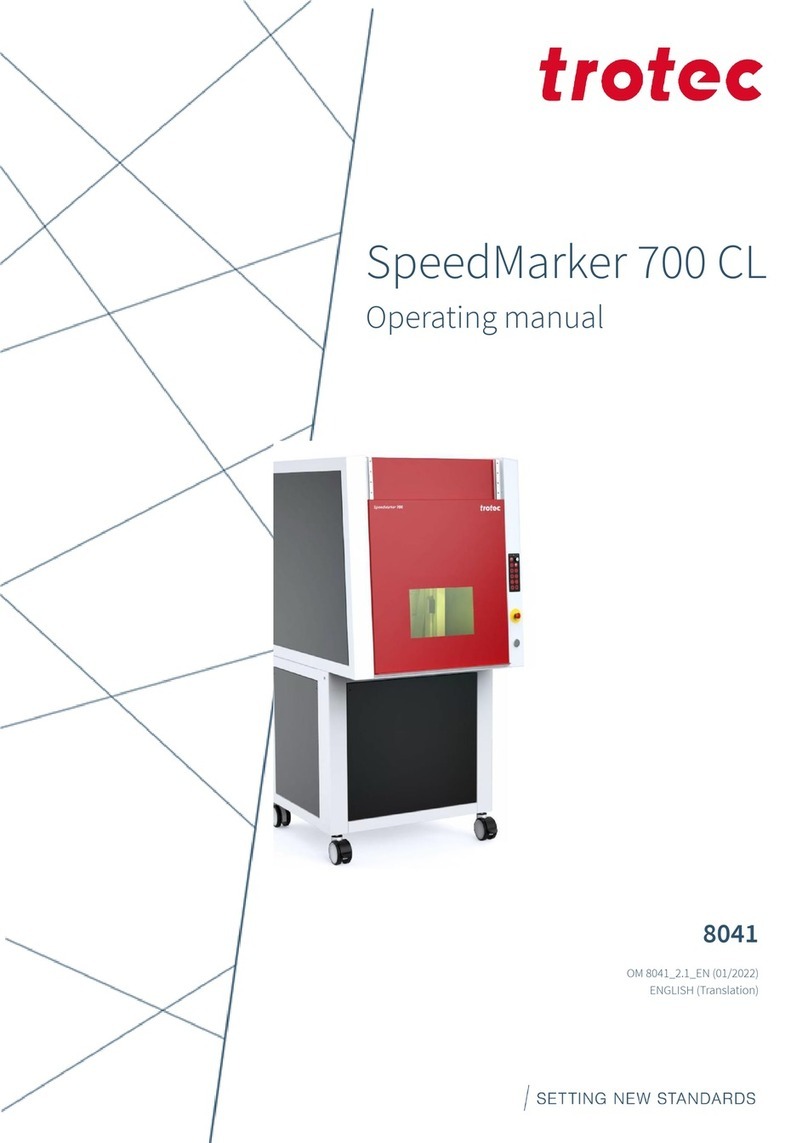
Trotec
Trotec SpeedMarker 700 CL User manual
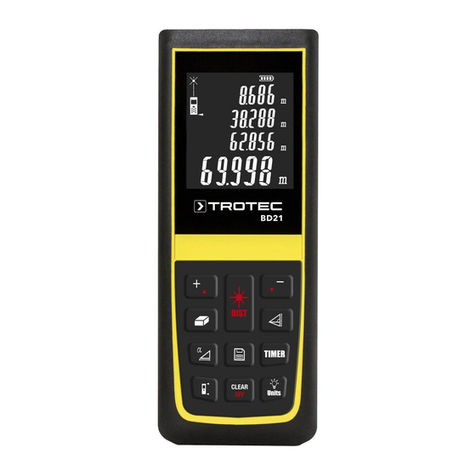
Trotec
Trotec BD21 User manual

Trotec
Trotec BA30WP User manual
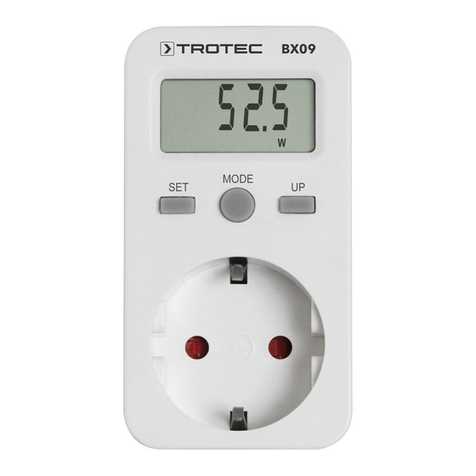
Trotec
Trotec BX09 User manual
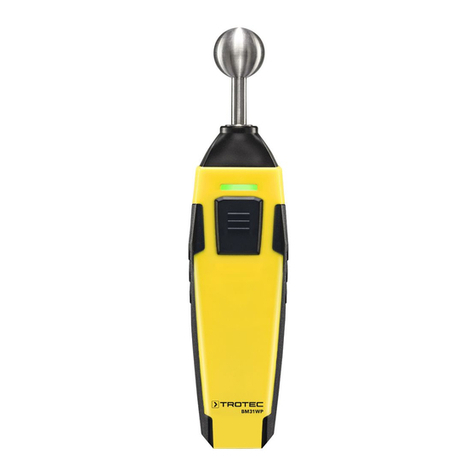
Trotec
Trotec BM31WP User manual
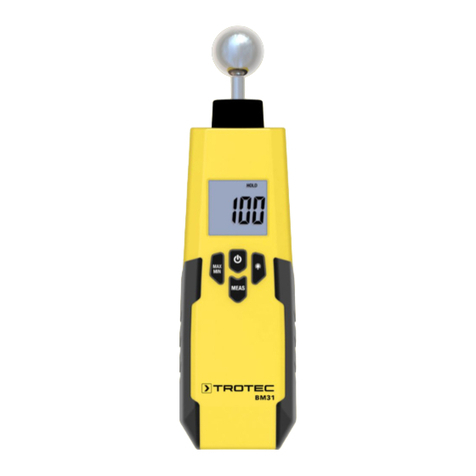
Trotec
Trotec BM31-XT User manual
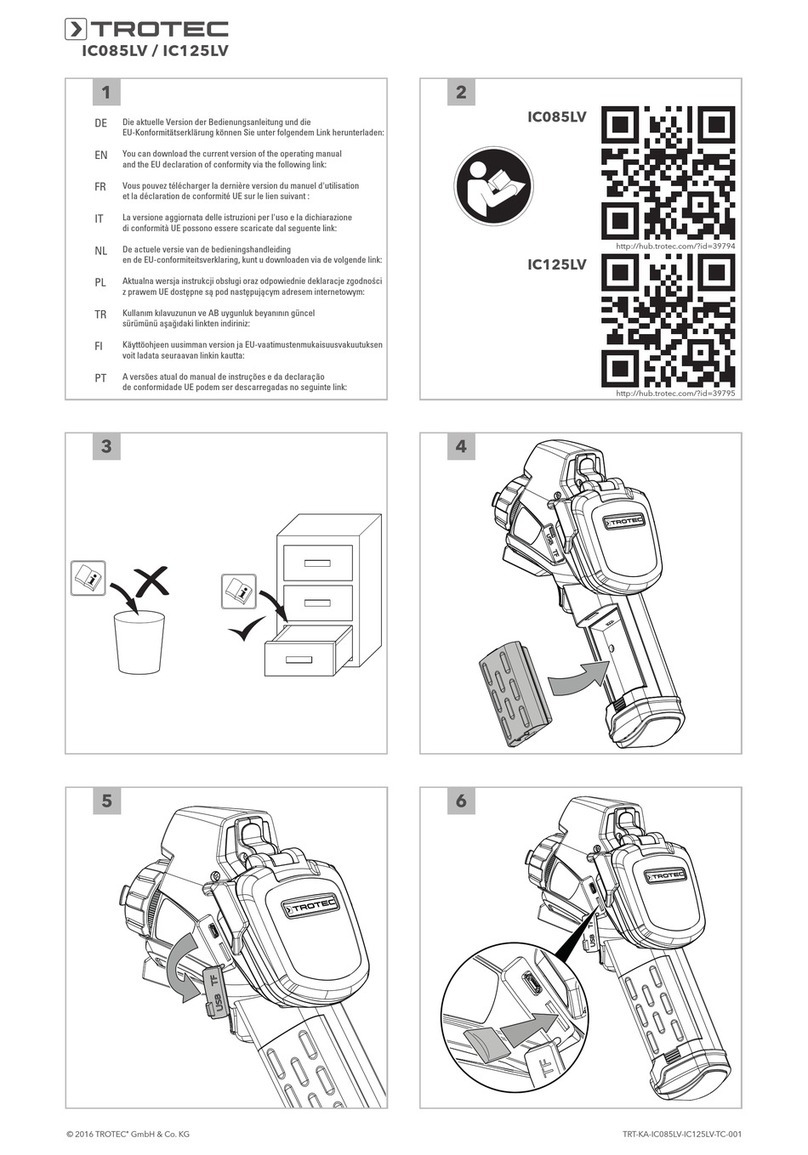
Trotec
Trotec IC085LV User manual
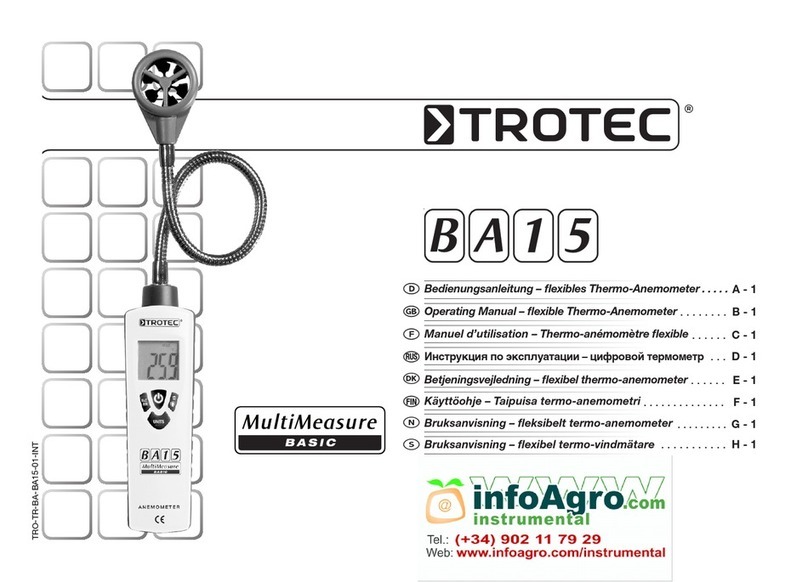
Trotec
Trotec MultiMeasure Basic BA15 User manual
Popular Measuring Instrument manuals by other brands
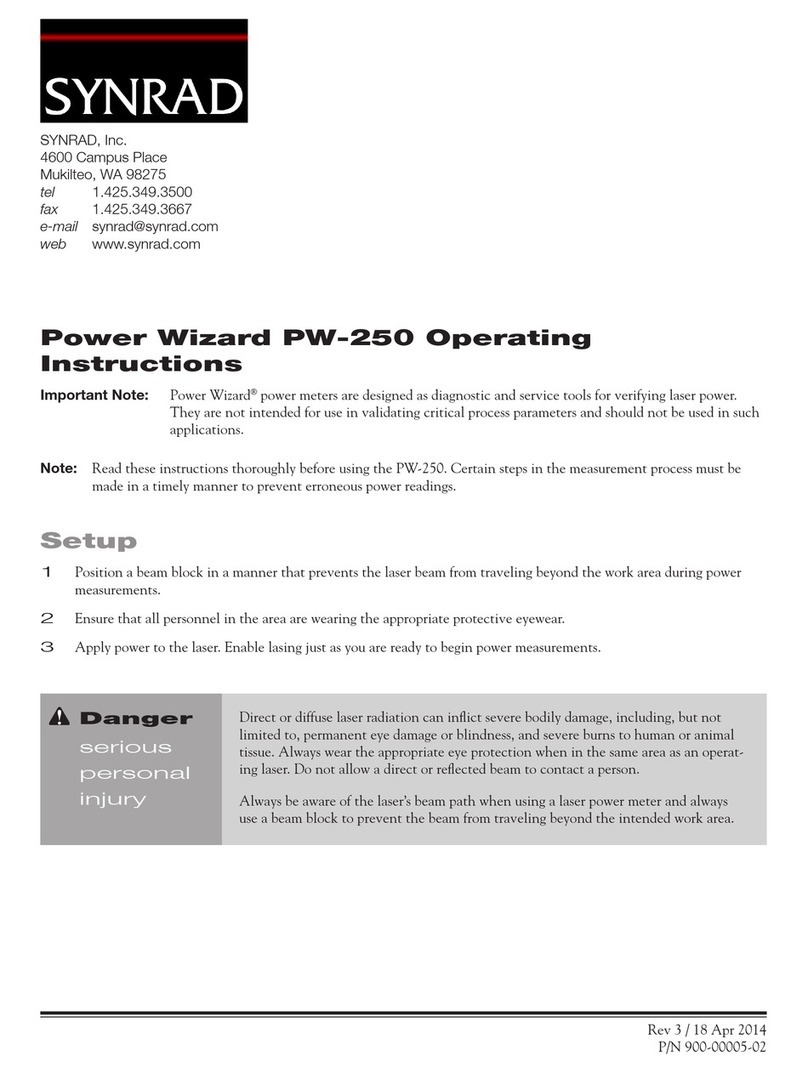
Synrad
Synrad Power Wizard PW-250 operating instructions

MULTISPAN
MULTISPAN AMP-19N operating manual
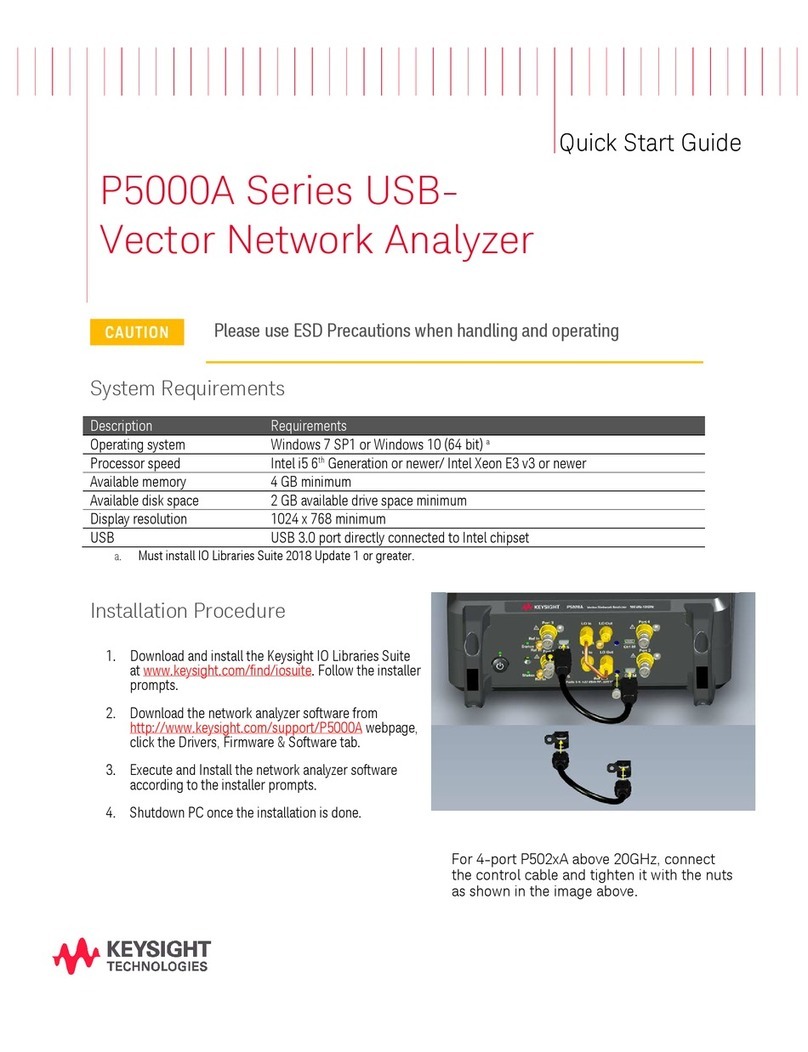
Keysight Technologies
Keysight Technologies P5000A Series quick start guide
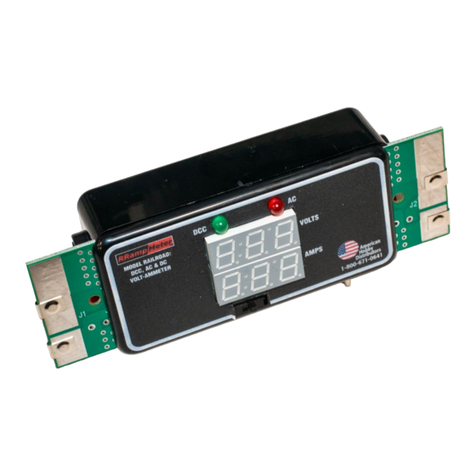
DCC Specialties
DCC Specialties RRampMeter Upgrade guide
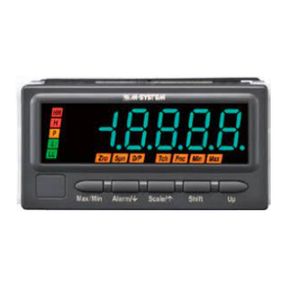
M-system
M-system 47 Series operating manual
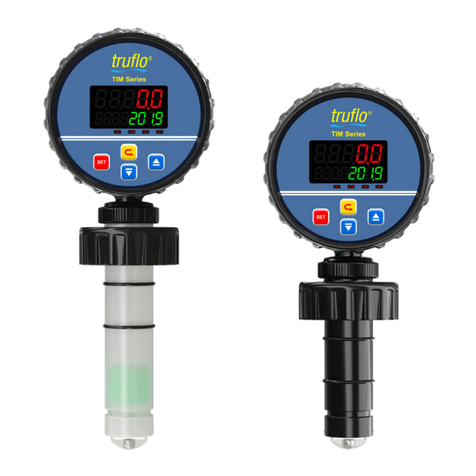
truflo
truflo TIP Series instruction manual
